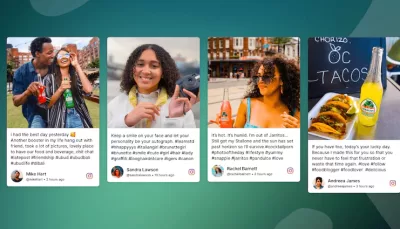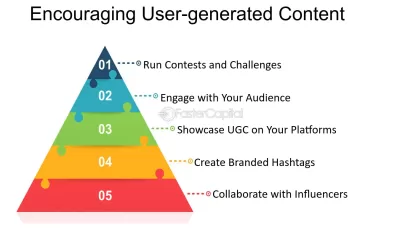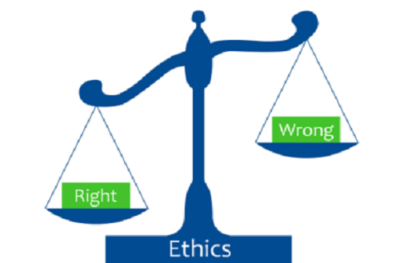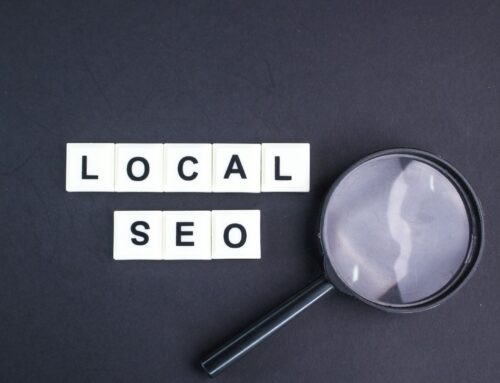Table of Contents
- Key Benefits of UGC in Healthcare Marketing
- Best Strategies for Encouraging User-Generated Content
- Legal and Ethical Considerations
- Measuring the Impact of User-Generated Content
- Case Studies of Successful Campaigns
- Content Management and Curation
- Challenges and Solutions in UGC
- Frequently Asked Questions
- How can patient testimonials be effectively integrated into healthcare marketing?
- What are the ethical considerations when using user-generated content in healthcare promotion?
- What role does user-generated content play in enhancing patient trust and engagement?
- How do healthcare providers measure the impact of user-generated content on their marketing campaigns?
- What are the best practices for managing and curating user-generated content in healthcare?
- How can healthcare marketers encourage patients to create and share content?
User-generated content (UGC) is basically content generated by users. It refers to any content created by users, whether it’s a blog post, video, or social media post. It’s the type of content that will make you stand out from your competitors. By sharing UGC, you can build trust with potential patients and show that your facility is a reliable choice.
One of the biggest benefits of UGC is that it allows you to tap into the power of social proof. When people see that others are using and endorsing your facility, they’re more likely to trust you. In fact, according to a survey by BrightLocal, 88% of people trust online reviews as much as personal recommendations. By sharing UGC, you can harness that trust and use it to attract new patients.
Another benefit of UGC is that it can help you create a more authentic brand. When you share content created by real people, you show that your facility is more than just a faceless organization. You show that you care about your patients and that you’re willing to listen to their feedback. This can help you build a stronger relationship with your community and create a more loyal patient base.
Key Benefits of UGC in Healthcare Marketing
User-generated content (UGC) has become an increasingly popular marketing strategy in healthcare, as it allows for a more authentic and engaging approach to reaching patients and healthcare consumers. UGC refers to any content that is created by users rather than by a brand or organization. This can include social media posts, blog articles, reviews, and more.

Enhancing Engagement
One of the primary benefits of UGC in healthcare marketing is its ability to enhance engagement with patients and healthcare consumers. By allowing patients to share their experiences and perspectives, UGC can help create a more personalized and relatable message. This can be particularly effective in healthcare, where patients may hesitate to trust traditional marketing messages from healthcare organizations.
UGC can also help to foster a sense of community among patients and healthcare consumers. Healthcare organizations can create a more supportive and collaborative environment by encouraging patients to share their stories and connect. This can be especially valuable for patients with chronic conditions or rare diseases, who may feel isolated or misunderstood.
Building Community Trust
Another key benefit of user-generated content in healthcare marketing is its ability to build trust with patients and consumers. By featuring real stories and experiences from patients, healthcare organizations can demonstrate their commitment to patient-centered care. This can help to establish a more authentic and trustworthy brand image, which can be critical in building long-term relationships with patients and healthcare consumers.
Best Strategies for Encouraging User-Generated Content
Encouraging user-generated content (UGC) is an excellent way to engage your audience and promote your healthcare brand. Here are some strategies to help you get started:

Social Media Campaigns
Social media is a great platform for UGC. You can create a campaign around a specific topic or theme and encourage your followers to share their experiences, opinions, or creative expressions. For example, you can create a hashtag for your campaign and ask your followers to use it when posting their content. This will make it easier for you to find and share their content on your social media channels.
Content Creation Challenges
Content creation challenges are another great way to encourage UGC. You can create a challenge around a specific topic or theme and ask your followers to create content based on that theme. For example, you can ask your followers to create a video explaining how your healthcare brand has helped them.
To make your campaign more engaging, you can offer incentives for the best UGC. For example, you can offer a prize to the UGC with the most likes or shares. This will encourage your followers to create high-quality content and share it with their friends and family.
Legal and Ethical Considerations

When it comes to user-generated content (UGC) in healthcare marketing, there are certain legal and ethical considerations that need to be taken into account. In this section, we will discuss two important considerations: HIPAA compliance and content moderation.
HIPAA Compliance
One of the most important legal considerations in healthcare marketing is compliance with the Health Insurance Portability and Accountability Act (HIPAA). HIPAA is a federal law that regulates the use and disclosure of protected health information (PHI). PHI is any information that can be used to identify an individual and relates to their health status, health care, or payment for health care.
When using UGC in healthcare marketing, organizations must ensure compliance with HIPAA regulations to protect patient privacy. This means that any UGC that contains PHI, such as a patient’s name, medical condition, or treatment plan, must be de-identified or have patient consent before it can be used in marketing materials. Organizations should also have policies and procedures in place to ensure that UGC is not used in a way that violates HIPAA regulations.
Content Moderation
Another important consideration when using UGC in healthcare marketing is content moderation. UGC can be a powerful tool for engaging with patients and promoting healthcare services, but it can also be risky if not properly moderated. Organizations should have clear guidelines and policies in place for moderating UGC to ensure that it is appropriate and relevant for their audience.
Content moderation can include reviewing UGC for accuracy, removing inappropriate or offensive content, and responding to comments and feedback from patients. Organizations should also be transparent about their content moderation policies and communicate them clearly to patients and other stakeholders.
Measuring the Impact of User-Generated Content
When it comes to measuring the impact of User-Generated Content (UGC) on healthcare marketing efforts, it is essential to understand its effectiveness and optimize future strategies. By measuring specific metrics, you can gain insights into how UGC influences brand engagement, conversion rates, and overall marketing performance.

Analytics and KPIs
One of the best ways to measure the impact of UGC is by using analytics and Key Performance Indicators (KPIs). Analytics can help you track the performance of your UGC campaigns, including how many people are engaging with your content, how long they are spending on your website, and how many conversions you are generating.
By setting up specific KPIs, you can track the success of your UGC campaigns and make data-driven decisions about how to optimize your strategy. Some common KPIs for UGC campaigns include engagement, conversion, and click-through rates.
User Engagement Metrics
Another way to measure the impact of UGC is to track user engagement metrics. These metrics can help you understand how your audience interacts with your content and responds to your messaging.
Some common user engagement metrics for UGC campaigns include likes, shares, comments, and mentions. By tracking these metrics, you can gain insights into what content is resonating with your audience and how to optimize your strategy for maximum engagement.
Measuring the impact of UGC on healthcare marketing efforts is essential for understanding its effectiveness and optimizing future strategies. By using analytics and KPIs, as well as tracking user engagement metrics, you can gain valuable insights into how UGC is influencing your brand and how to improve your marketing performance.
Case Studies of Successful Campaigns

Real-World Examples
User-generated content (UGC) has become a powerful tool in healthcare marketing. Leveraging patient stories and testimonials can be a great way to connect with your audience and build trust. One real-world example of a successful UGC campaign is the “My Cancer Story” campaign by Cancer Treatment Centers of America. This campaign invited cancer patients to share their stories and experiences on their website, which were then featured on their social media channels. The campaign was a huge success, with over 2,000 patient stories shared and over 300,000 engagements on social media.
Another great example of a successful UGC campaign is CaringBridge’s “Share Your Story” campaign. CaringBridge is a nonprofit organization providing free websites to people with severe health conditions. The campaign encouraged users to share their stories on their website, which were then featured on their social media channels. The campaign was a huge success, with over 50,000 stories shared and over 1 million engagements on social media.
Campaign Analysis
The success of these campaigns can be attributed to the power of storytelling. By sharing their personal experiences, patients could connect with others going through similar experiences. This created a sense of community and support, which is crucial for patients facing serious health conditions.
In addition to building community and trust, UGC campaigns can also be a great way to generate leads and drive conversions. By featuring patient stories on their website and social media channels, healthcare organizations can showcase their expertise and build credibility. This can lead to increased website traffic, more leads, and, ultimately, more conversions.
Content Management and Curation
Creating user-generated content is just one part of the process. Managing and curating that content is equally important. In this section, we will discuss two key aspects of content management and curation: editorial guidelines and community management.

Editorial Guidelines
When it comes to user-generated content, it’s important to have clear editorial guidelines in place. These guidelines should outline what types of content are acceptable and what types of content are not. They should also include guidelines for tone, style, and formatting.
Having clear editorial guidelines will help ensure that all user-generated content is consistent and aligned with your brand’s values and messaging. It will also help prevent any inappropriate or offensive content from being published.
Community Management
Managing your community of user-generated content creators is another important aspect of content management. This includes responding to comments and feedback, engaging with your audience, and building relationships with your content creators.
By actively managing your community, you can foster a sense of belonging and encourage more user-generated content. This can help create a virtuous cycle of content creation and engagement that benefits both your brand and your audience.
To effectively manage your community, you should have a clear strategy in place. This should include guidelines for responding to comments and feedback, as well as a plan for engaging with your audience on a regular basis.
Challenges and Solutions in UGC
User-generated content (UGC) can be a powerful tool for healthcare marketing. However, it also presents some challenges that healthcare organizations need to address. In this section, we will discuss some common challenges that healthcare organizations face when using UGC and offer solutions to overcome them.

Addressing Negative Content
One of the biggest challenges of UGC is dealing with negative content. Negative reviews and comments can damage a healthcare organization’s reputation and turn potential patients away. However, ignoring negative content is not the solution.
To address negative content, you should respond to negative reviews and comments promptly and professionally. This shows that you are listening to patients and taking their concerns seriously. You can also use negative feedback as an opportunity to improve your services and address any issues that patients may have.
Maintaining Content Relevance
Another challenge of UGC is maintaining content relevance. UGC can quickly become outdated or irrelevant if not managed properly. This can lead to a decrease in engagement and a loss of credibility.
To maintain content relevance, you should regularly monitor and curate UGC. This means removing any outdated or irrelevant content and promoting fresh and engaging content. You can also encourage patients to create new content by running UGC campaigns and contests.
Frequently Asked Questions
How can patient testimonials be effectively integrated into healthcare marketing?
Patient testimonials are a powerful tool for healthcare providers to showcase their services and build trust with potential patients. To effectively integrate patient testimonials into healthcare marketing, providers should ensure that the testimonials are authentic, relatable, and relevant to the target audience. It is also important to obtain consent from patients before using their testimonials and to comply with any applicable privacy laws.
What are the ethical considerations when using user-generated content in healthcare promotion?
When using user-generated content in healthcare promotion, providers should consider ethical considerations such as patient privacy, informed consent, and accuracy of information. Providers should obtain consent from patients before using their content and ensure that the content is accurate and does not contain any misleading or harmful information. Providers should also be transparent about their use of user-generated content and give credit to the original creators.
What role does user-generated content play in enhancing patient trust and engagement?
User-generated content can play a significant role in enhancing patient trust and engagement by providing a more authentic and relatable perspective on healthcare experiences. Patients are more likely to trust and engage with content created by their peers, rather than content created by healthcare providers. User-generated content can also help healthcare providers better understand the needs and preferences of their patients, which can lead to more personalized and effective healthcare services.
How do healthcare providers measure the impact of user-generated content on their marketing campaigns?
Healthcare providers can measure the impact of user-generated content on their marketing campaigns by tracking metrics such as engagement rates, click-through rates, and conversion rates. Providers can also use surveys and feedback forms to gather patient insights about their experiences with user-generated content. It is important to regularly analyze and adjust marketing strategies based on these metrics to optimize the effectiveness of user-generated content.
What are the best practices for managing and curating user-generated content in healthcare?
Providers should establish clear guidelines for content creation and use to effectively manage and curate user-generated content in a healthcare setting. They should also regularly monitor and moderate user-generated content to ensure that it is accurate, relevant, and appropriate for the target audience. It is also important to credit the original creators of user-generated content and obtain consent before using their content.
How can healthcare marketers encourage patients to create and share content?
Healthcare marketers can encourage patients to create and share content by providing incentives such as discounts or rewards for content creation. Marketers can also create campaigns encouraging patients to share their healthcare experiences and stories on social media platforms. It is important to make it easy for patients to create and share content by providing clear instructions and guidelines and by using user-friendly platforms and tools.







